With its myriad roadname- and roadnumber-specific detail variations, this HO scale General Electric C44-9W diesel-electric locomotive from ScaleTrains.com ensures that there’s plenty for all the “rivet counters” out there to scrutinize. And they won’t be disappointed.
For this review I tested a Rivet Counter-series model that came factory- equipped with an ESU LokSound v.5.0 dual-mode decoder. Like other ScaleTrains.com models, a lesser detailed, value-priced Operator series version is also available.
Prototype. Between 1993 and 2004, General Electric produced more than 3,500 Dash 9 series locomotives. Most of the Dash 9s were designated C44-9W with a 7FDL16 4,400 hp engine and a safety cab. Other major variations included the 4,000 hp C40-9 and C40-9W, equipped with a standard or safety cab, respectively. These were built for Norfolk Southern. The railroad has since uprated these locomotives to 4,400 hp and re-classed them accordingly.
General Electric ended Dash 9 production when it introduced its Evolution series locomotives in 2004. However, most of the Dash 9 fleet still soldiers on in Class 1 service.
The model. The HO scale Dash 9’s dimensions match a prototype diagram in the 1997 Car & Locomotive Cyclopedia (Simmons-Boardman). All molded and separately applied details match the model’s prototype, NS no. 9692, which was originally built as a C40-9W in 2001.
The model’s paint scheme matches the prototype after it was repainted in 2016. By this time it had also been uprated to 4,400 hp. Lettering, herald, and stencil placement all match prototype photos, including the correct d9-44cw classification under the locomotive number on each cab side.
The plastic body shell features well-defined molded detail, including engine access doors, door latches, and grills. The side air intake grills are see-through with separately applied radiator detail visible behind them. Flexible plastic handrails and stanchions are securely attached to the sills. Other separate detail parts include all grab irons, uncoupling levers, and m.u. hoses.
The Hi-Ad truck sideframes are especially well-done and include separate brake cylinders, piping, and rotating bearing caps.
Prototype-specific details include the communications antenna array on the cab roof, the Graham-White E-Bell on the front of the fuel tank, and black “eyebrow” grab irons above the windshield. The model also features a brass casting of the Nathan K5LAR24 airhorn.
The detailed cab interior includes seats and desktop-style controls. There are no crew figures, but they could easily be added by the modeler.
Mechanism. After removing the front and rear coupler draft-gear boxes, I could lift off the body shell. A can motor with dual brass flywheels is mounted in the center of a die-cast metal chassis. All axles are powered and all the metal wheels pick up track current.
The ESU LokSound v.5.0 decoder is plugged into a 21-pin socket on the main printed-circuit (PC) board. There are two cube-type speakers inside a die-cast metal enclosure over the rear truck. An additional die-cast metal weight is mounted over the front truck.
All lighting is provided by surface- mount light-emitting diodes (LEDs). The front headlight, number boxes, and walkway LEDs are mounted on the chassis. Rather than wires, contacts on the end lighting boards transmit electricity to additional LEDs mounted in the body shell.
DCC operation. As shown in the chart below, the model accelerated smoothly from 1 scale mph to 66 scale mph in our DCC speed test. The prototype has a top speed of 70 mph. The model’s decoder can also be set to 128 speed steps for finer slow speed control.
Our Rivet Counter model came equipped with an ESU PowerPack. These two super capacitors kept the sounds, lights, and motor running for up to 3 seconds without any track power. This provides more than enough time to get the locomotive over a stretch of dirty or problematic track.
Also shown in the charts, the model achieved nearly a quarter pound of drawbar pull, which is equivalent to 52 HO freight cars on straight and level track. During a hill climb test on our staff layout, the Milwaukee, Racine & Troy, the Dash 9 hauled a 17-car freight up a long 3 percent grade without slipping or stalling.
DCC sound. Pressing F8 begins an engine startup sound sequence and turns on the number box and walkway lights. The model’s mechanism was virtually silent even at the slowest speeds – no motor hum to get in the way of the sound effects.
There are a total of 15 horn and two bell sound file options. On our NS sample, the default Nathan K5LA horn and Graham White E-Bell sounds match the prototype.
Other user-triggered effects include a headlight dimmer, radiator fan, and a realistic dynamic brake sound sequence. All the supported functions and some programming tips are listed in a printed user manual.
In addition to the button-controlled independent brake, my favorite function is Drive/Hold. Pressing F9 kept the speed constant while I used the throttle knob to manually notch the engine sounds.
Function 6 turns on the directional ditch lights, which flash when the horn is sounded. Out of the box, the ditch lights appeared to flash faster than prototype videos that I found. However the flash rate was easy to adjust using CV112.
Decoder programming was made even easier using an ESU LokProgrammer decoder/computer interface (sold separately). I also added some additional acceleration and deceleration momentum, changed the headlights to non-directional control, and changed the address to the locomotive cab number.
I advance consisted the Dash 9 with a ScaleTrains.com NS SD40-2. Both models support CVs 21 and 22, so I could set up function control under the consist address, which is convenient for m.u. operation.
DC operation. Sound and lighting effects are more limited on DC layouts, but the Dash 9 was still fun to operate. Sound and lights started at 7V. The model crept along smoothly at 1.5 scale mph after I advanced the throttle to 8.5V. It attained a 66 scale mph top speed at 12V.
I appreciated that there was some momentum built in. With a little practice I could start, stop, and change the direction of the locomotive without any interruption in sound. Under DC, the headlights and ditch lights are directional. Sounds are limited to the engine rpms that increase or decrease with throttle position. Quick deceleration causes a brake squeal to sound.
With its exceptionally high level of detail and optional prototype-specific sound decoder, this HO scale Dash 9 from ScaleTrains.com lives up to its Rivet Counter moniker.
Operator version: $189.99 (DCC sound), $124.99 (DC, no sound).
$29.99 (detail kit for Operator versions)
Manufacturer
ScaleTrains.com Inc.
7598 Highway 411
Benton, TN 37307
www.scaletrains.com
Era: 1993 to present (2016 to present as detailed and decorated for NS no. 9692)
Road names (multiple numbers)
Rivet Counter line: Norfolk Southern; Atchison, Topeka & Santa Fe; Burlington Northern Santa Fe (Heritage II scheme); and Union Pacific.
Operator line: BNSF Ry. (Heritage I scheme), Chicago & North Western, Norfolk Southern, and Union Pacific.
Features
• All-wheel drive and electrical pickup
• Chemically blackened metal wheels in gauge
• Dual-mode ESU LokSound V.5.0 (Rivet Counter) or Essential (Operator) dual- mode decoder with cube-type speakers and two ESU PowerPack capacitors
• Five-pole, skew-wound motor with dual brass flywheels
• Light-emitting diode (LED) headlights, ditch lights, and illuminated number boxes
• Minimum radius: 18″, 22″ recommended
• Operates on codes 70, 83, and 100 rail
• Metal (Rivet Counter) or plastic (Operator) semi-scale type E knuckle couplers at correct height
• Rivet Counter version also has LED walkway lights and factory-applied, prototype-specific detail parts
• Weight: 1 pound, 7.5 ounces





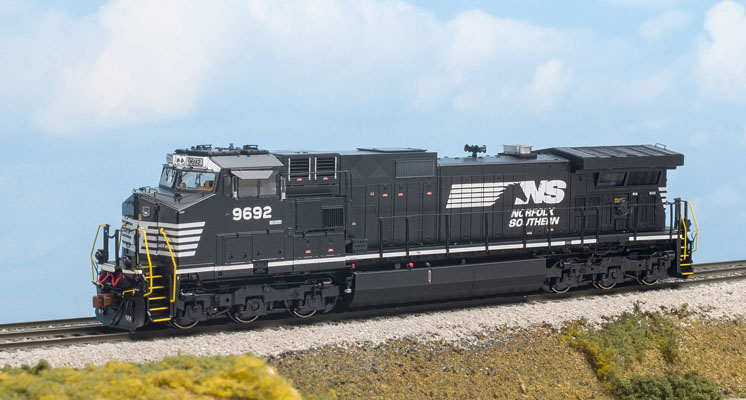
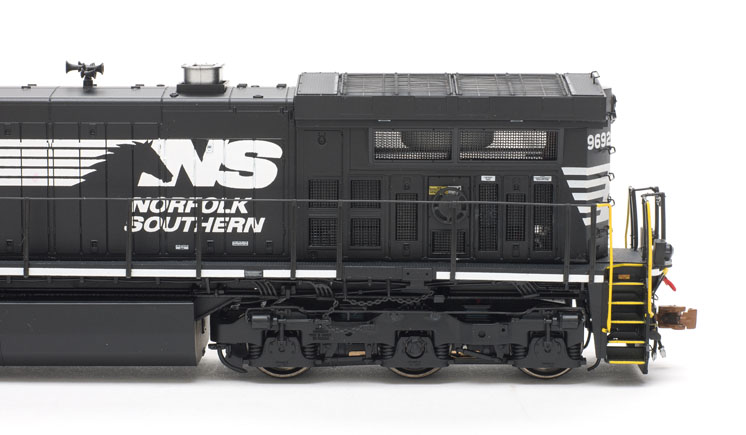
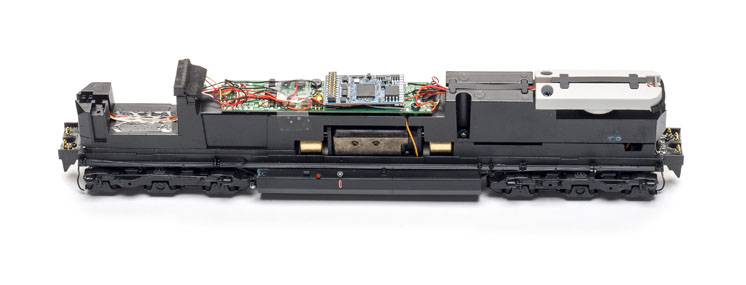
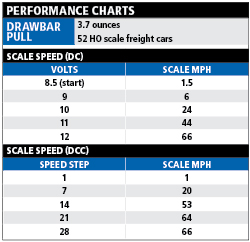

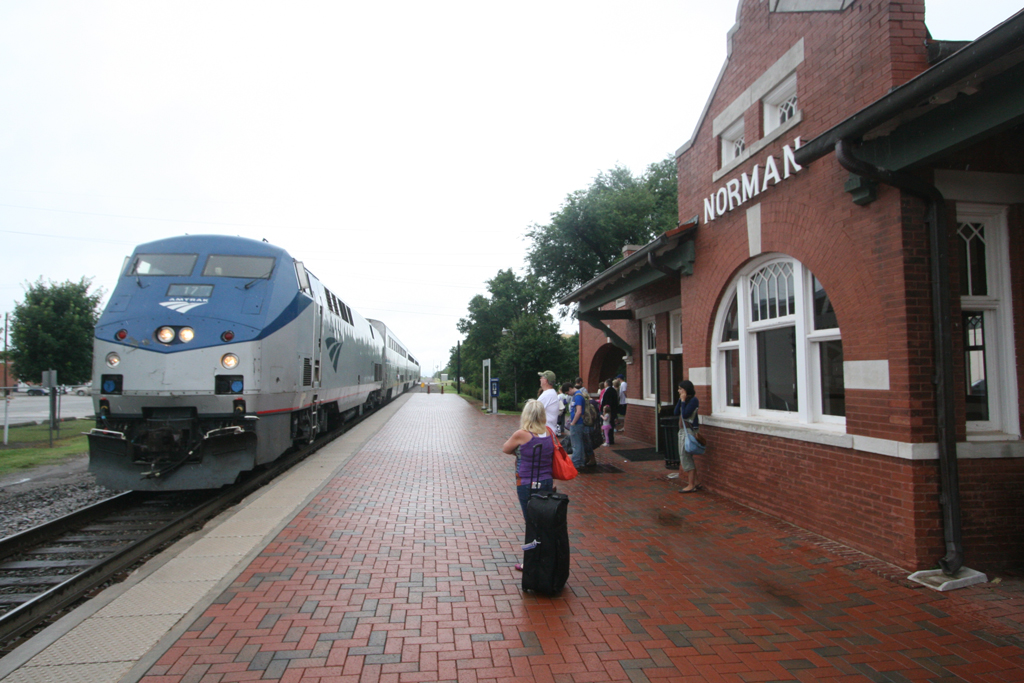
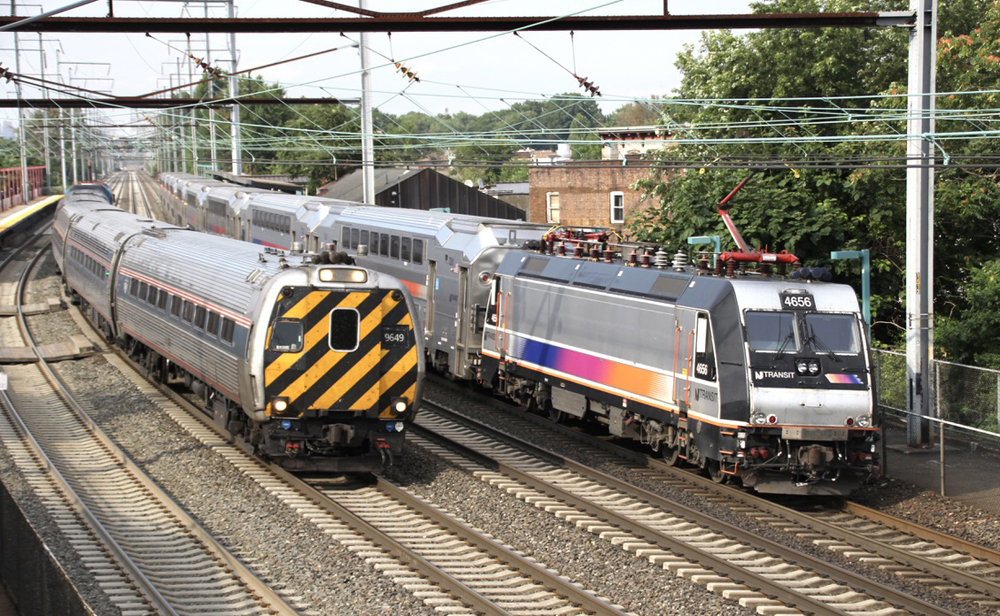

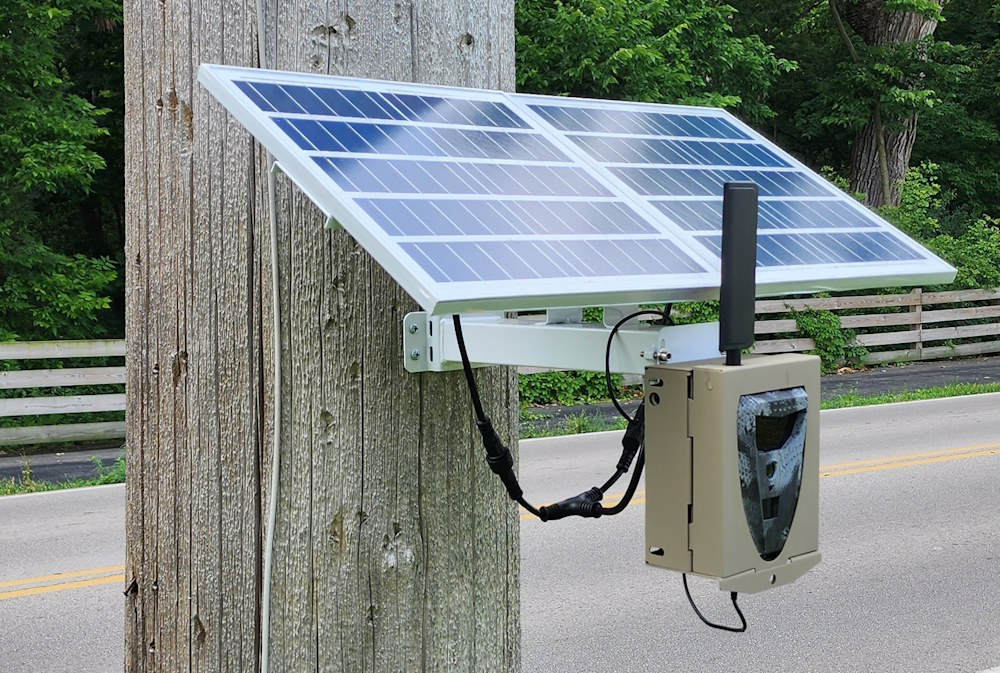




I was surprised that the tested pulling power was so much lower than the ScaleTrains ET44, which showed as 5 oz. back in 2018. True the Dash 9 is about 3 oz. lighter, but I expected closer to 4.5 oz., not the value shown. Too bad we don’t have two other samples to see if all are consistent, or if there is variation among them.
Question. Does the DC rivet counter have the same motherboard as the DCC version, with a plug in the socket to use DC? Assume that there are no speakers, but a place for them to be installed. Are caps for the “alive” function also on the board? I am not a fan of the very complex Loksound and would prefer another decoder brand. I do understand that some light functions would not work at plug-in, but would need to be set up with aux lighting functions.
Awesome! I placed my preorder for NS 9598 a while ago – can’t wait to get it!